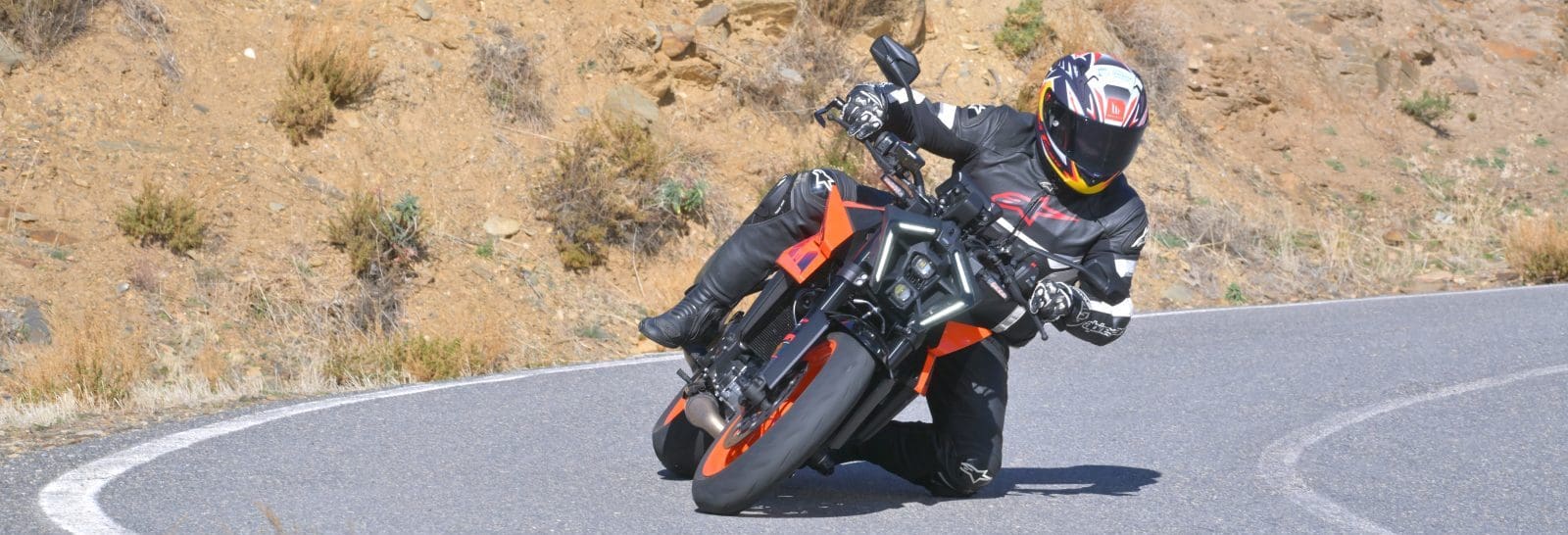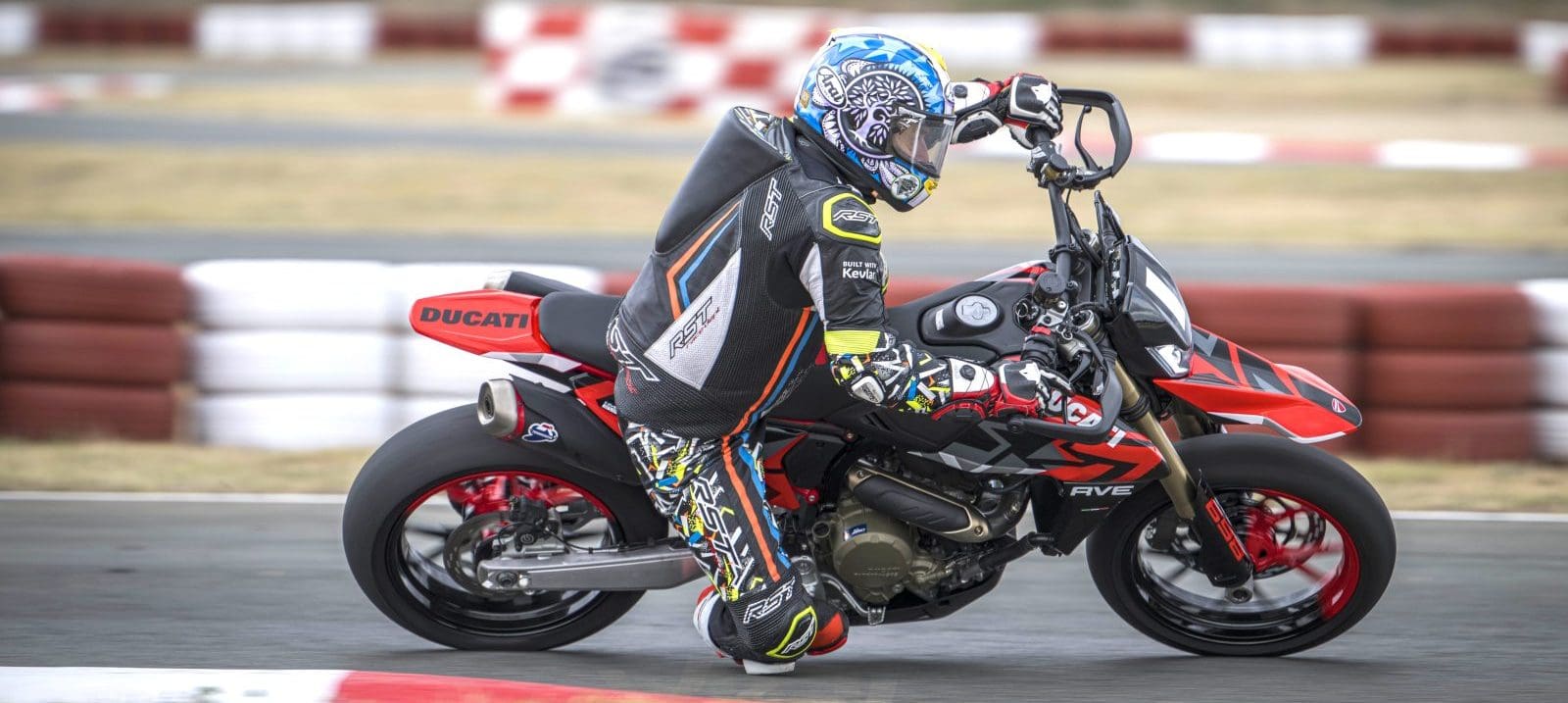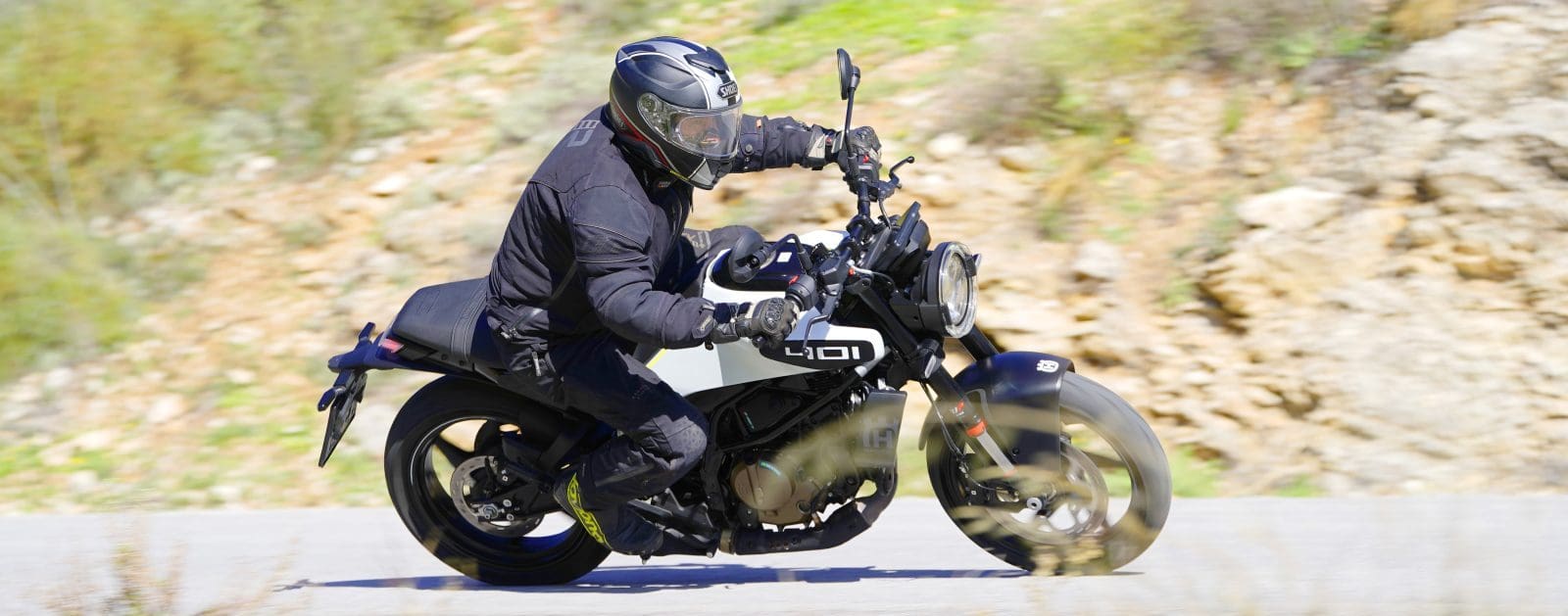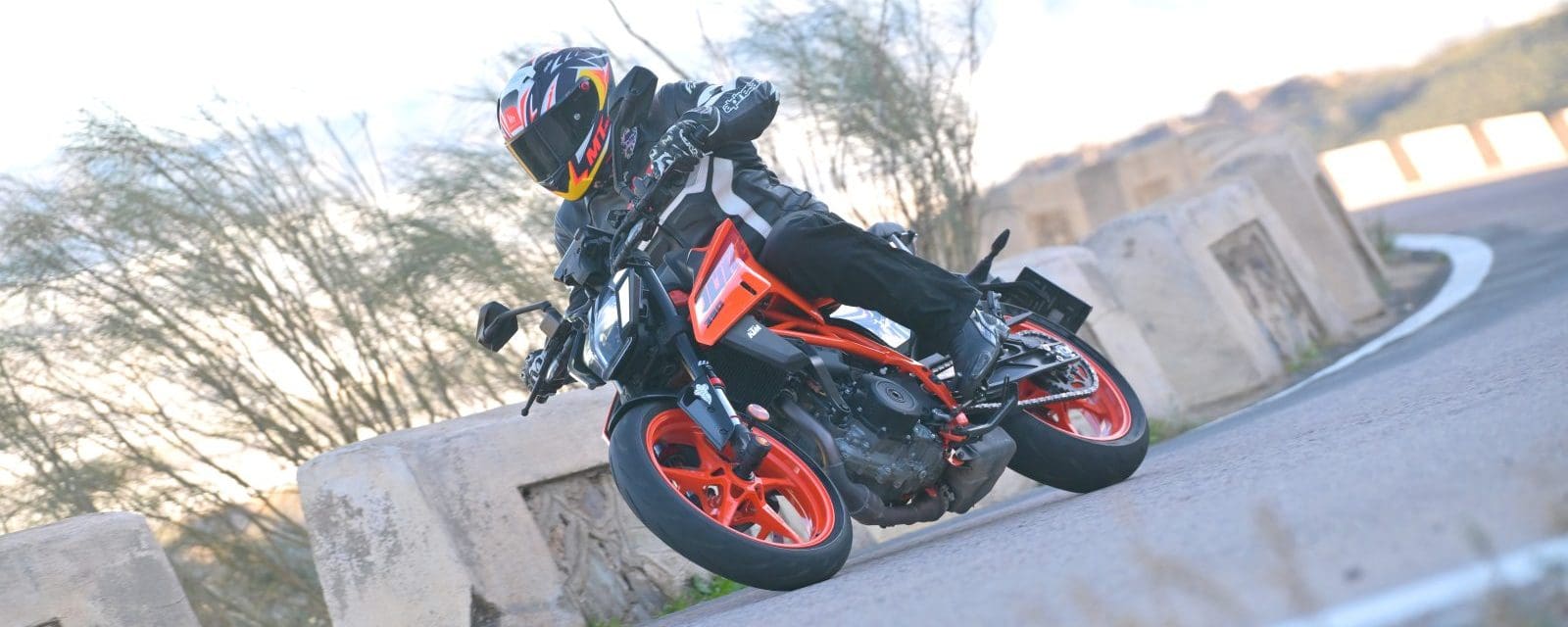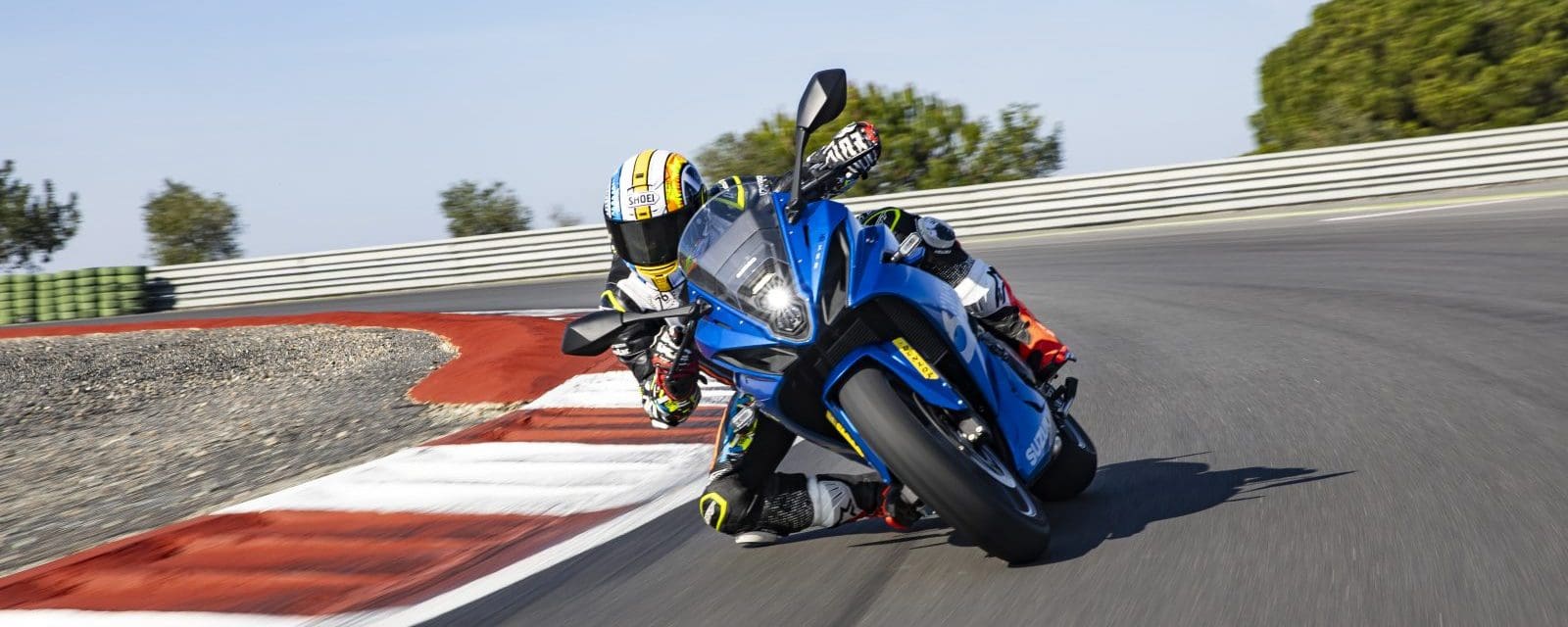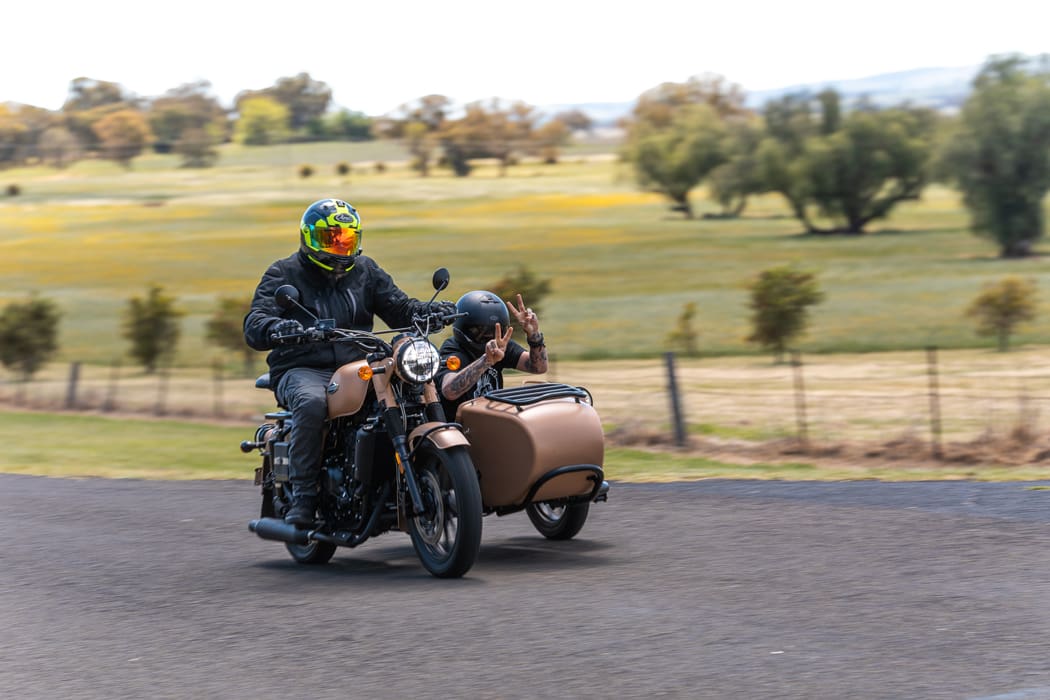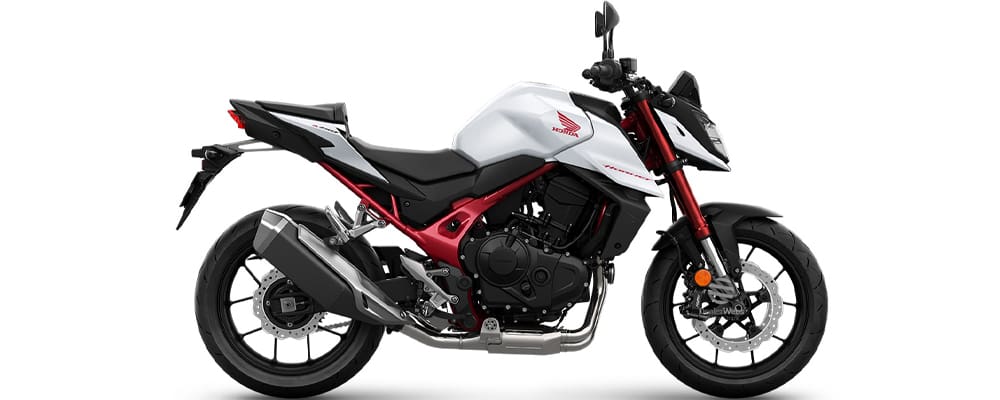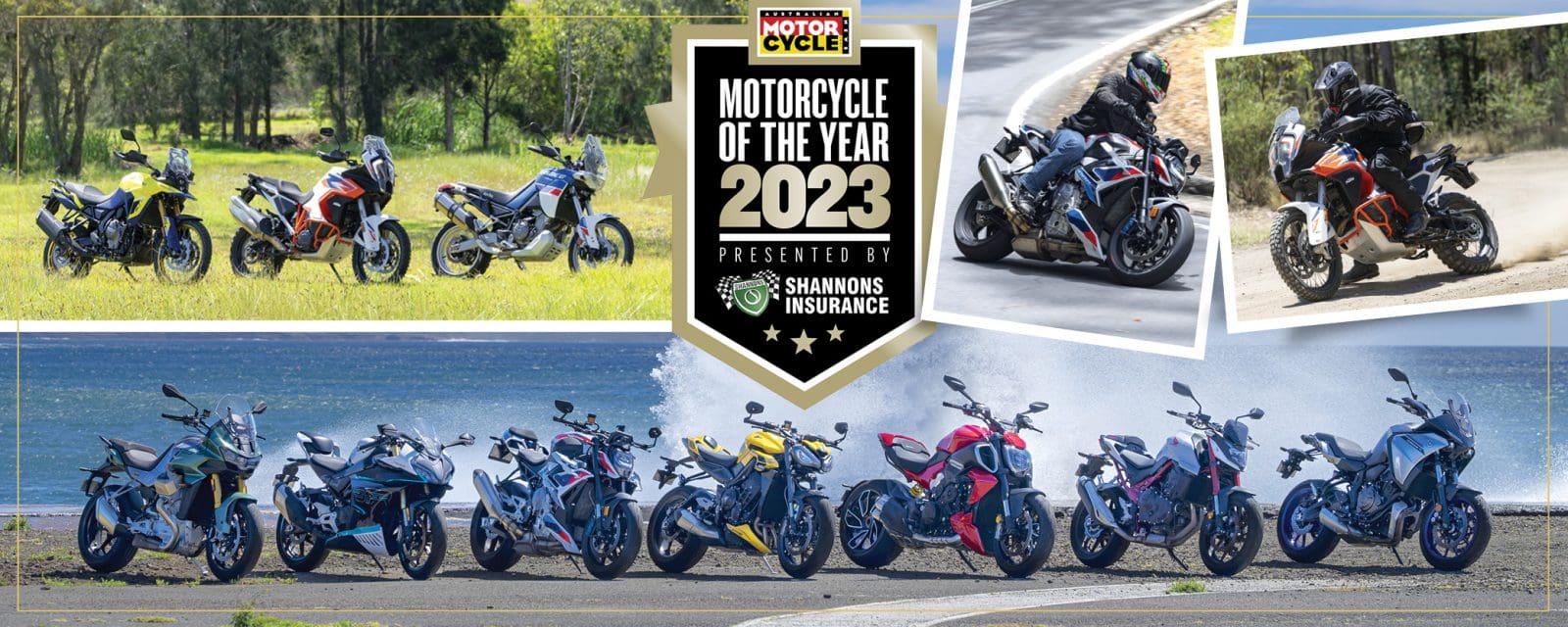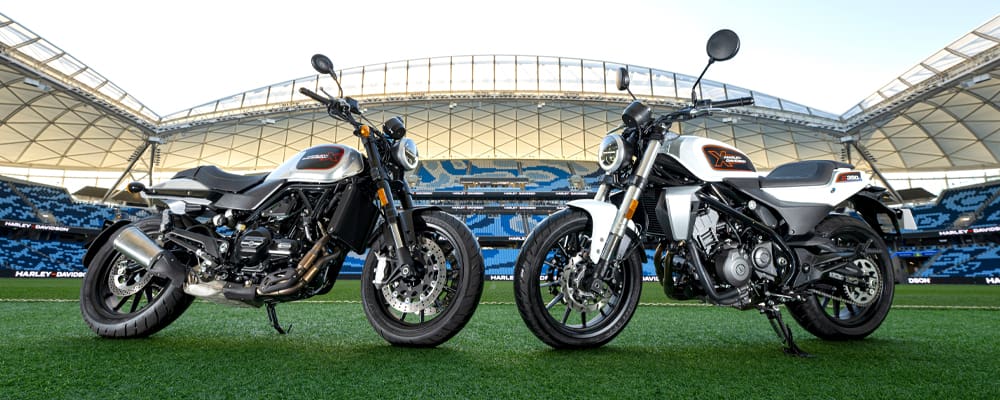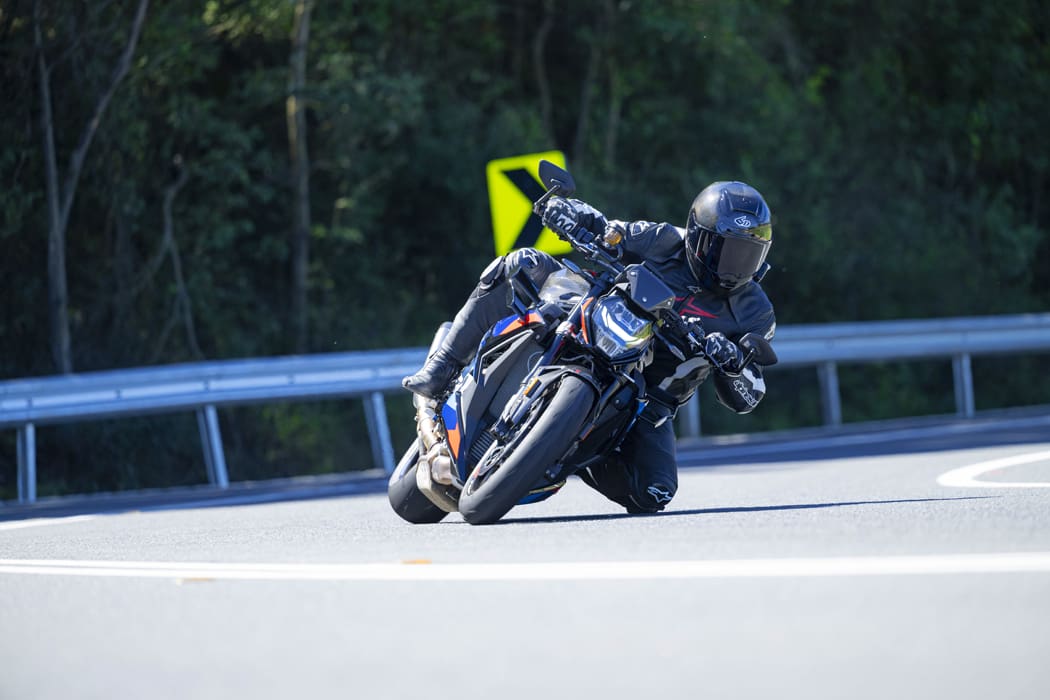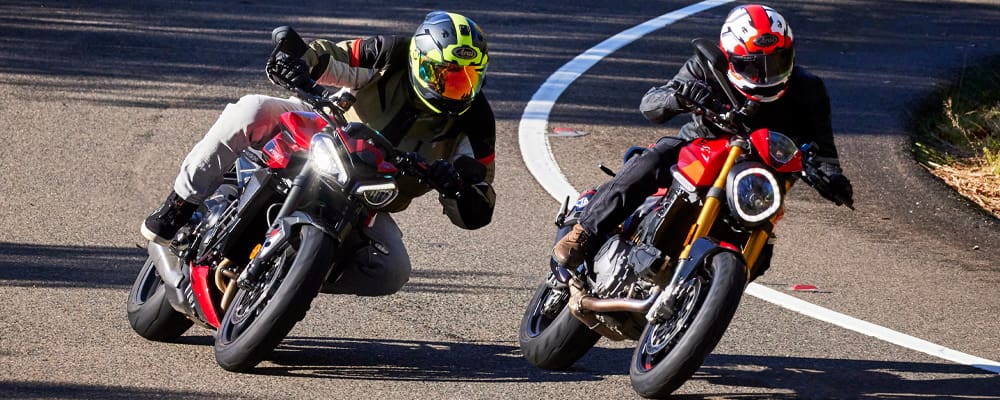Many associate the Ducati brand with V-twins, but after the company released the first single-cylinder engined bike in three decades, it might be time to rethink. Sure, the configuration still thrives in the form of the Superquadro V2 and Testastretta desmos, but it’s the V4 Desmosedici Stradale R and Granturismo powerhouses that make the big numbers these days.
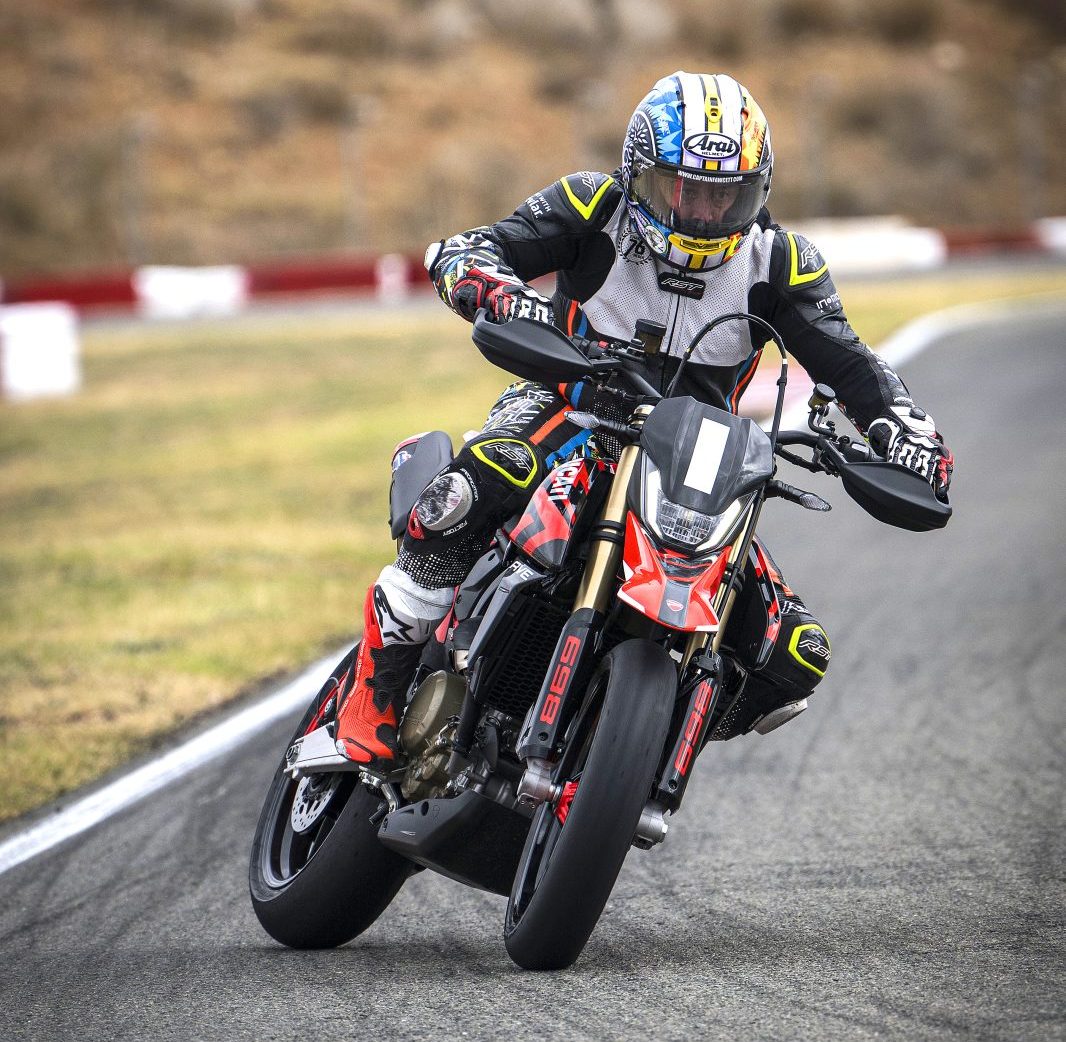
The release of another non-twin for the 2024 model year – another performance-focused headline maker at that – threatens to shake up not only some Ducatisti purists but also our perceptions of what a single-cylinder engine should be.
The Superquadro Mono is Ducati’s first single since the 549cc Supermono racer of the mid-1990s and first production single since the bevel engines of the 1970s. Effectively one half of a 1299cc Superquadro V2 Panigale, the 659cc, four-valve desmo makes 57kW (76hp) and revs to an astonishing 10,250rpm, making it both the most powerful and highest revving production single the world has yet seen.
The first machine to receive the 698 Mono power unit (because Ducati would be mad not to build an entire platform around this engine) is the all-new Hypermotard 698 Mono: 151kg of extra-light and fast-steering fun and games, a road legal but virtually ready-to-race supermoto scalpel.
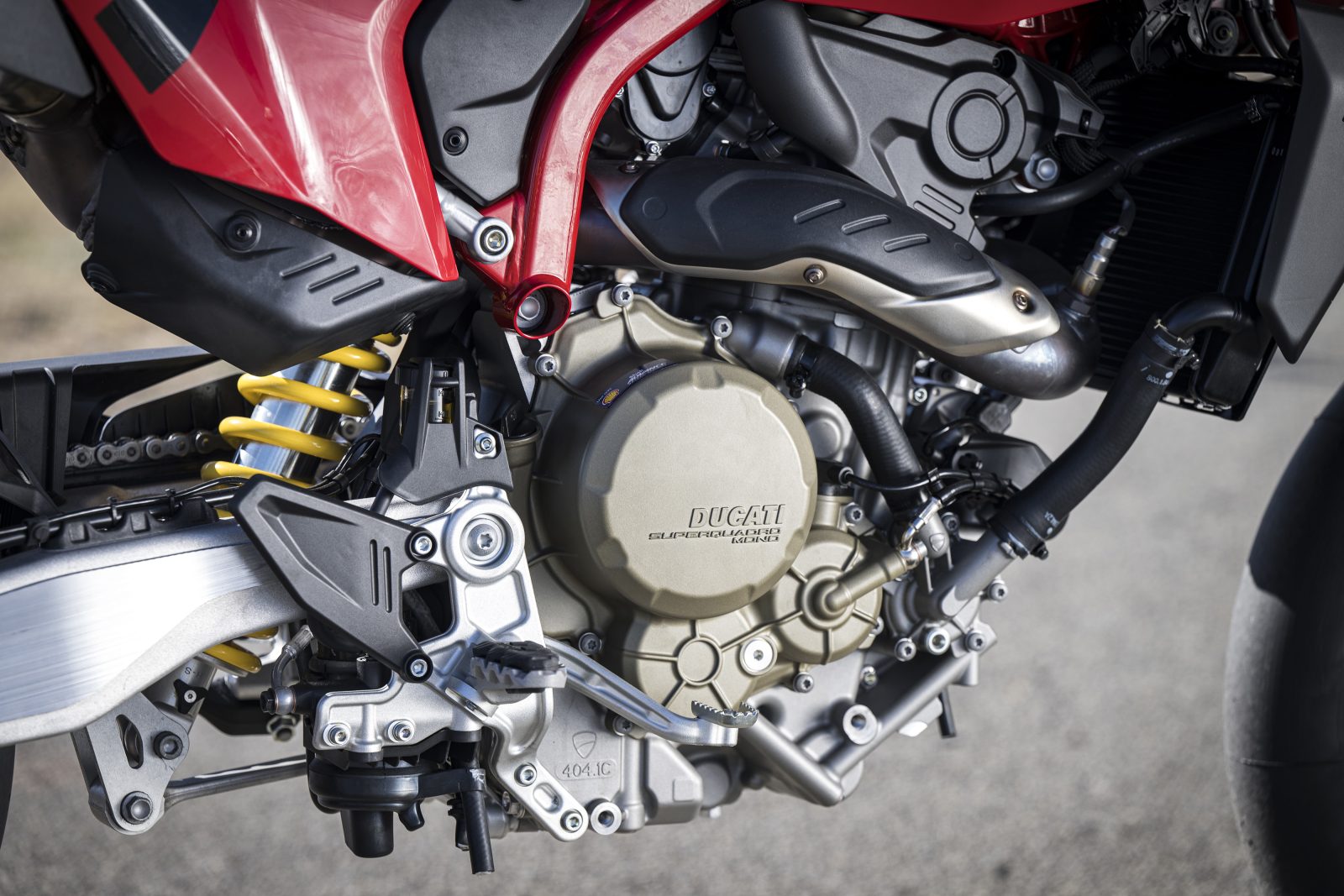
The Hypermotard’s chassis features a trellis frame that weighs just 7.2kg, a lightweight and fully adjustable 45mm Marzocchi fork and Y-shape cast-alloy wheels instead of the heavier wire spoke rims commonly seen in this class.
Rear suspension is via a conventional dual-sided swingarm and a fully-adjustable Sachs rising-rate monoshock, while brakes are a single Brembo M4.32 front caliper and 330mm disc up front, and a single-piston Brembo and 240mm disc at the rear. As we’ve come to expect from Ducati, there is state-of-the-art cornering traction control and ABS as well as three power modes; four riding modes (Sport, Road, Urban and Wet); wheelie control; wheelie assist (yee-haa); engine brake control and launch control. There is also Ducati’s slide-by-brake function, which allows non-expert riders to back-in to corners like a pro (double yee-haa).
Like the bigger and heavier Hypermotard 950 V-twin, the Hypermotard 698 Mono is offered in both base and RVE variants, the latter having graffiti graphics, dual-colour wheels and a two-way quickshifter. The base model starts at $22,800, while the RVE is priced at $24,200 (ride away).
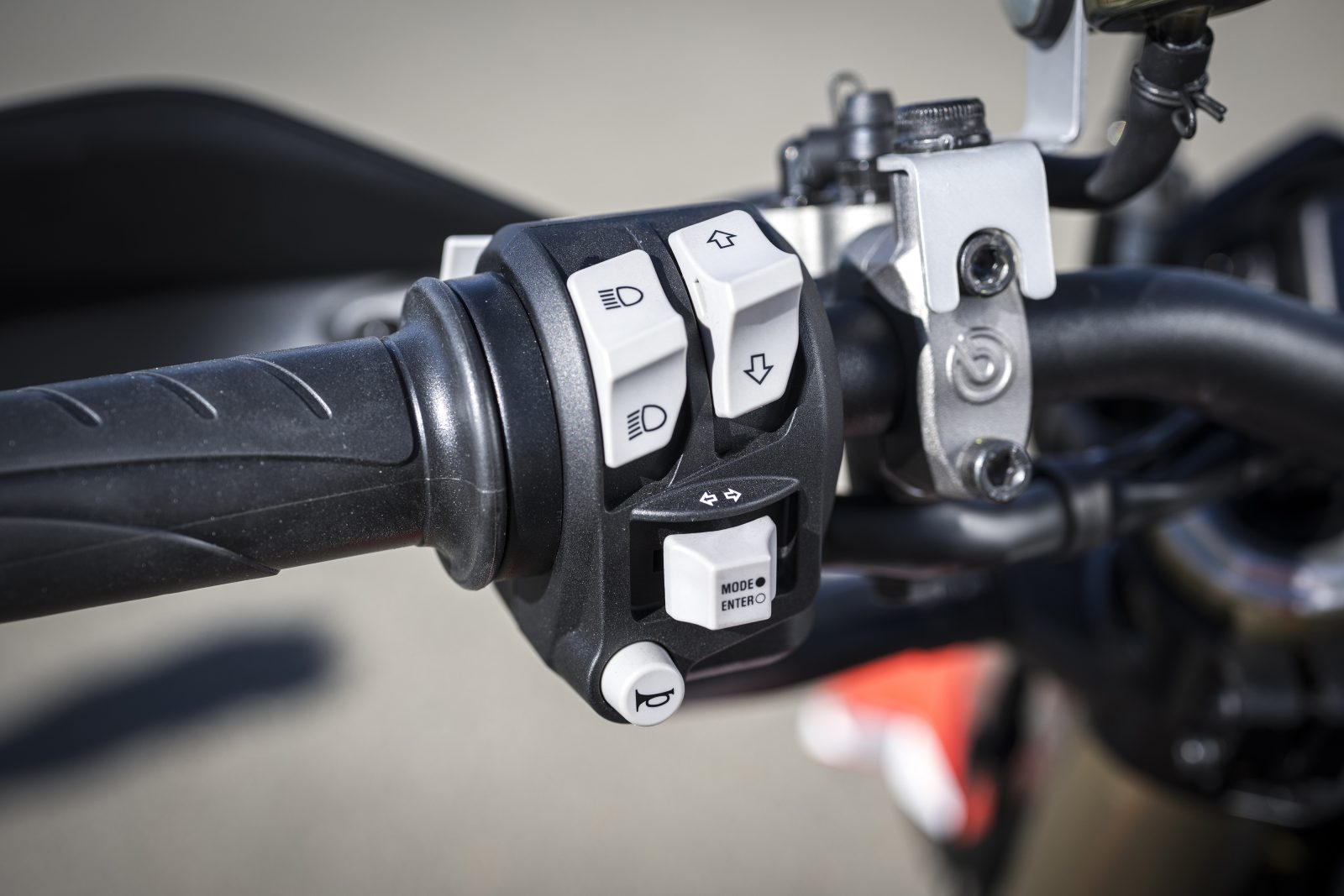
Our RVE testbike was also fitted with a distinctly fruity, track-only Termignoni race exhaust system that raised peak power to 62kW (84.5hp), along with a race seat, sump guard and race footpegs, which would take the asking price close to $29,591 – more than the $26,500 (ride away) twin-cylinder Hypermotard 950 RVE, with no extras.
But first, let’s talk about that free-revving, mould busting Superquadro Mono.
Its capacity is actually 659cc, not the 698 it says on the tin, but the really important numbers relate to its bore and stroke. At 116mm x 62.4mm it is, just like the Panigale V2 it’s developed from, massively oversquare and, thanks also to low-friction internal coatings and superb twin-balance shafts, revs beyond the imaginable to 10,250rpm.
An equally wild 57kW peak power figure arrives at 9750rpm while torque peaks at 63Nm at a relatively lofty 8000rpm, reflecting the high-revving nature of this very modern single.
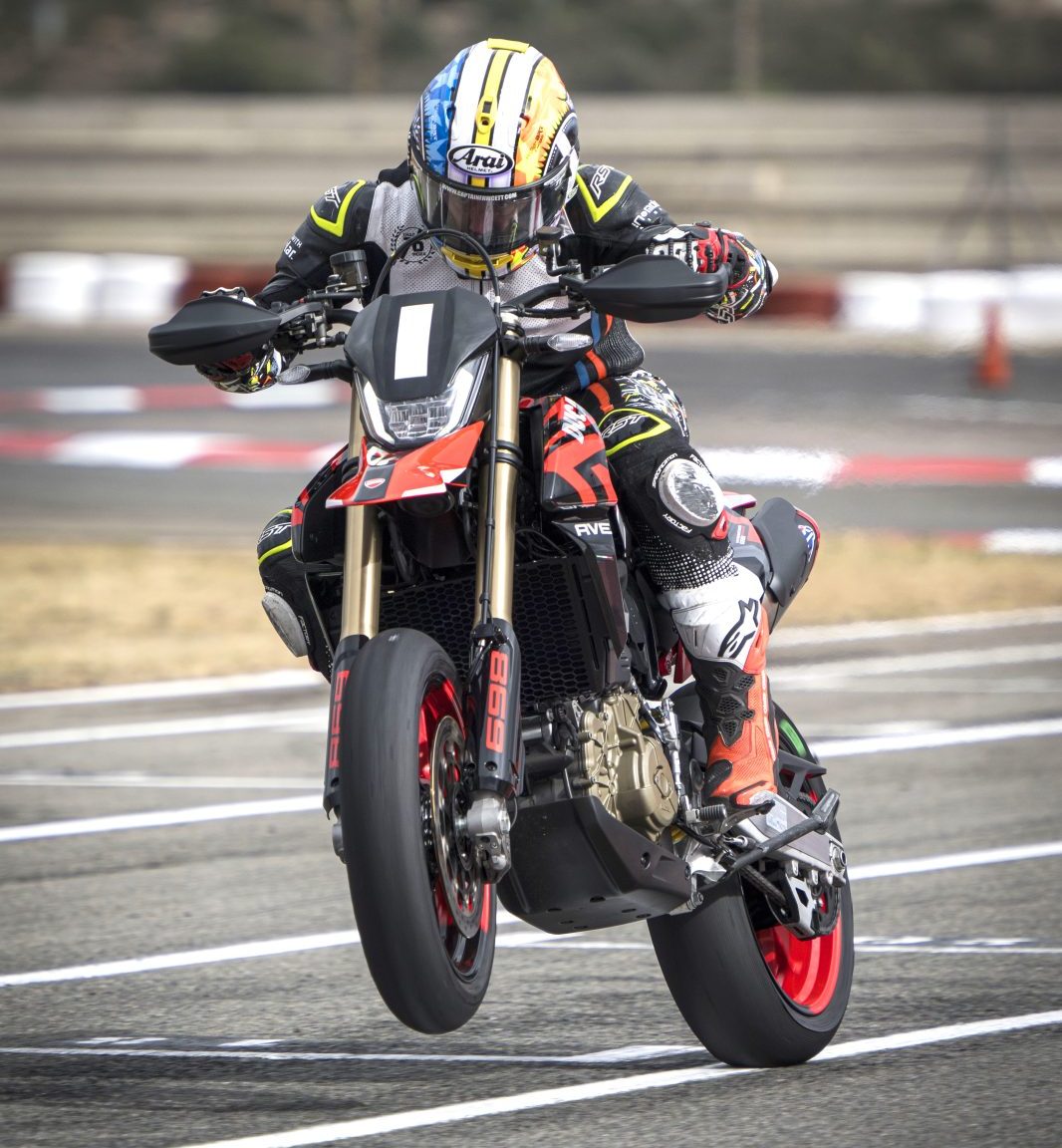
The electronics are such a fundamental part of the 698 package that setting up for the mixed weather conditions during our test at the Valencia supermoto circuit in southern Spain was key to the bike’s performance. In the morning, for example, it was damp and cold so I opted for Wet mode, the low power mode (43kW/58hp), ABS level 4 (that’s the max), Ducati Wheelie Control 4 (also the max), Ducati Traction Control 4 (out of 8) and a middle-of-the-road Engine Brake Control setting.
Something of an inconvenience perhaps, but once dialled in the combination of throttle maps and rider aids are so good I could ride with utter sureness on a difficult surface, picking up my braking points while allowing the Pirelli Diablo Rosso IV tyres to come up to temperature. The Wet mode throttle response is soft and friendly off a closed throttle, and I could feel the DTC bringing dozens of small slides at the rear into line.
As the track surface dried, I opted for Road mode, which gives full power and slightly lower levels of electronic intervention than Wet, while retaining that exquisitely smooth throttle connection. The faster I went the more the 698 Mono felt like a precisely balanced parallel-twin than a single. Sure, it generated the satisfying traction that all good singles possess, but also revved so fluently and so hard it was difficult to believe there was only one piston beneath me.

On the track, this readiness to rev, and rev on beyond peak power, allows you to hold on to the rpm between corners – ideal on a tight and twisty circuit. Initially, it feels counter intuitive, as years of riding other supermoto singles have drilled my left foot into short-shifting and using the torque of the midrange to drive between corners. On the Hypermotard 698 Mono, however, you cane it. It’s almost brutal.
As you’d assume, the Superquadro Mono’s extra short-stroke engine doesn’t generate the bottom-end grunt of the more traditional competition but, according to Ducati, 70 percent of its torque is available from 3000rpm and 80 percent between 4500rpm and 10,250rpm. And that’s how it feels; there is always grunt if not copious amounts of it.
With the wheelie control deactivated, the front Pirelli lifts easily in the first three gears, and the Duke always drives smoothly off the bottom. No matter how hectic things get, even in Sport mode and with 85hp of the Termi-equipped RVE model on tap, the throttle response remains user-friendly.
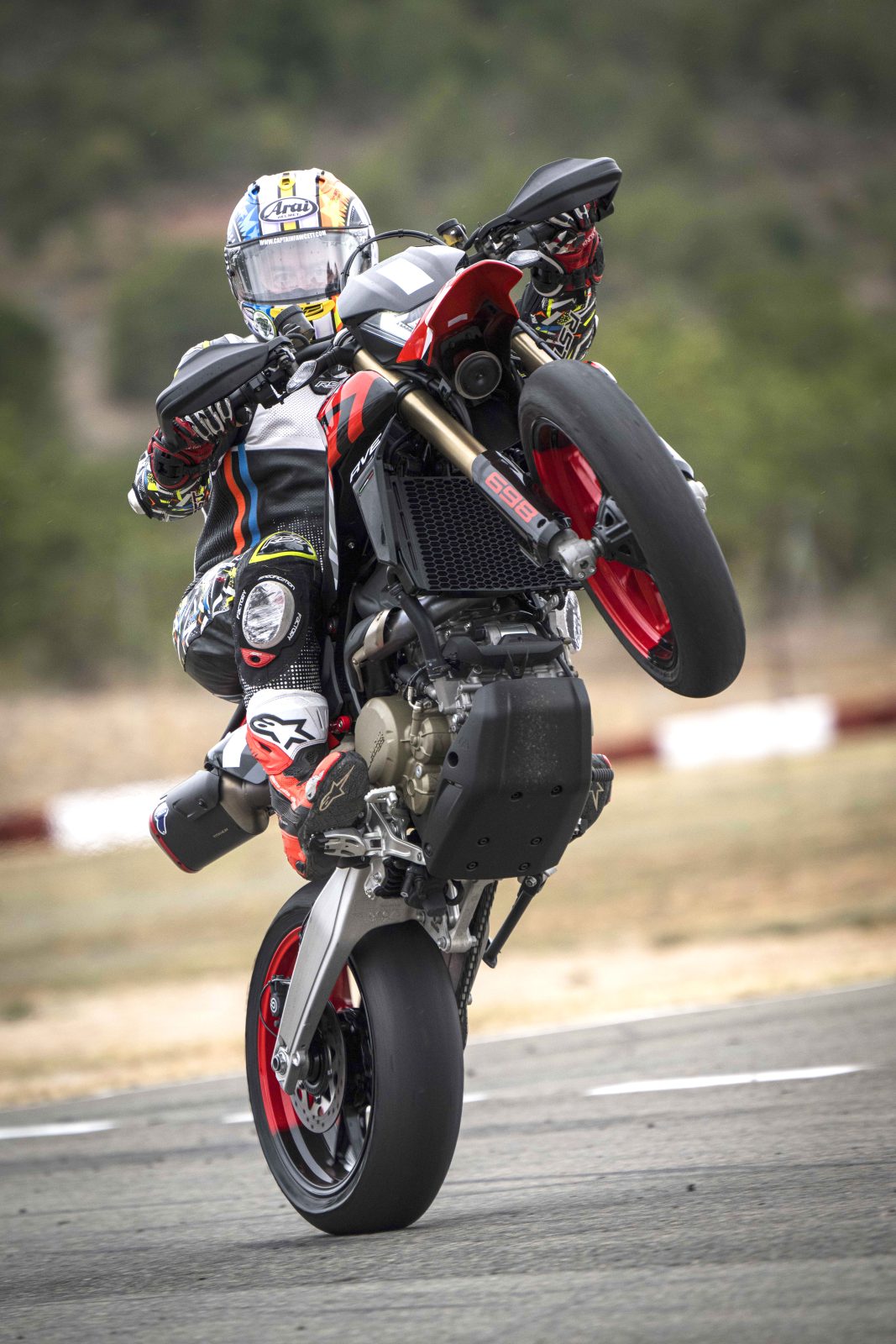
Complementing all this accessible drive are a chassis and suspension that work superbly on a supermoto circuit. Both ends are fully adjustable, and both the standard model and RVE share the same suspension components: Marzocchi up front, Sachs on the rear. We tweaked the suspension for track use on the RVE’s slick Pirelli rubber, but on the standard bike and standard Pirellis we ran stock settings, which tells its own story.
Cleverly, Ducati has made the 698 work for foot-out supermoto riders as well as for those who stick to knee-down on trackdays. I’m an old-school knee-down rider and even with a tall seat and long-travel suspension (215mm front, 250mm rear) attacking the track felt natural. The fuel tank is in the conventional position (it’s under the seat on some bikes) and there’s noticeable weight over the front, which means that you can feel what the front Pirelli is doing, much like a conventional sporty nakedbike. You don’t feel distanced from the contact patch by the long-travel fork. Mid-corner the ’pegs did occasionally tickle the track, but this was only with slick tyres fitted. Even at huge lean angles the Ducati felt planted and didn’t drift wide which some bikes with long-travel suspension can do when pushing for a lap time.
It’s the electronics that truly advance the Hypermotard 698 Mono to a higher level. The collective effect of those riding and power modes and myriad rider aids grants all riders, no matter their skill or risk level, permission to exploit the bike in safety. Those new to supermoto can, for example, add extra lean-sensitive traction control and ABS, set the wheelie control low so the front Pirelli hovers an inch or two over the track, and cut lap after lap in relative safety.
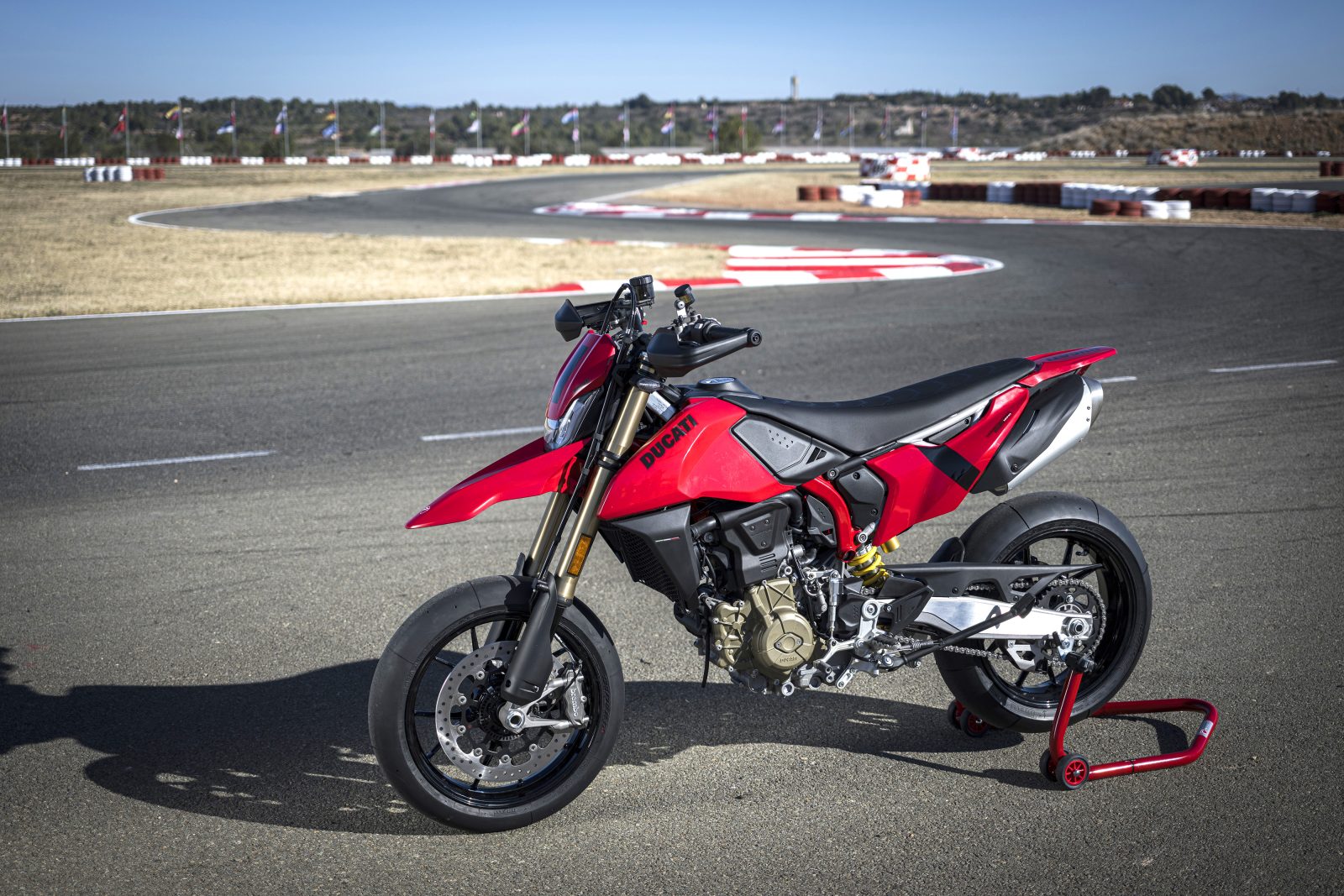
As their skills and confidence grow, the electronics can be trimmed to suit.
The slide-by-brake Bosch cornering ABS is particularly inspiring. Getting a bike to back-in is a tough skill to learn as you have to brake heavily, crunch down the gears, balance the clutch and back brake, and do so with enough aggression to break traction. Get it wrong and a painful highside beckons – but the 698 Mono holds your hand all the way through this process.
The system has four settings. Setting 4 gives conventional lean-sensitive ABS, meaning the rear tyre won’t break free or back in. Level 3, which I used in the wet, is for supermoto novices and allows a small slide. Level 2 allows the rear to back-in on the brakes, but not lock. Level 1 is for experts and has no cornering function; the rear wheel will lock but the front still has ABS. Using 2, I could brake hard, downshift, release the clutch and jump on the back brake – and simply allow the electronics to do the rest.
The system won’t turn you into a supermoto superstar overnight but you will start to feel the rear tyre break free without worrying the day is about to end in the medical centre. Even with hot slick rubber fitted, I was able to predictably slide the rear into first-gear corners like I would usually only attempt on the PlayStation. Talking of which, Ducati offers a track-only option, which comes with the race exhaust, that allows much higher and more sustainable wheelies than the standard wheelie control. Tip: don’t tell your mates it’s installed on your bike.
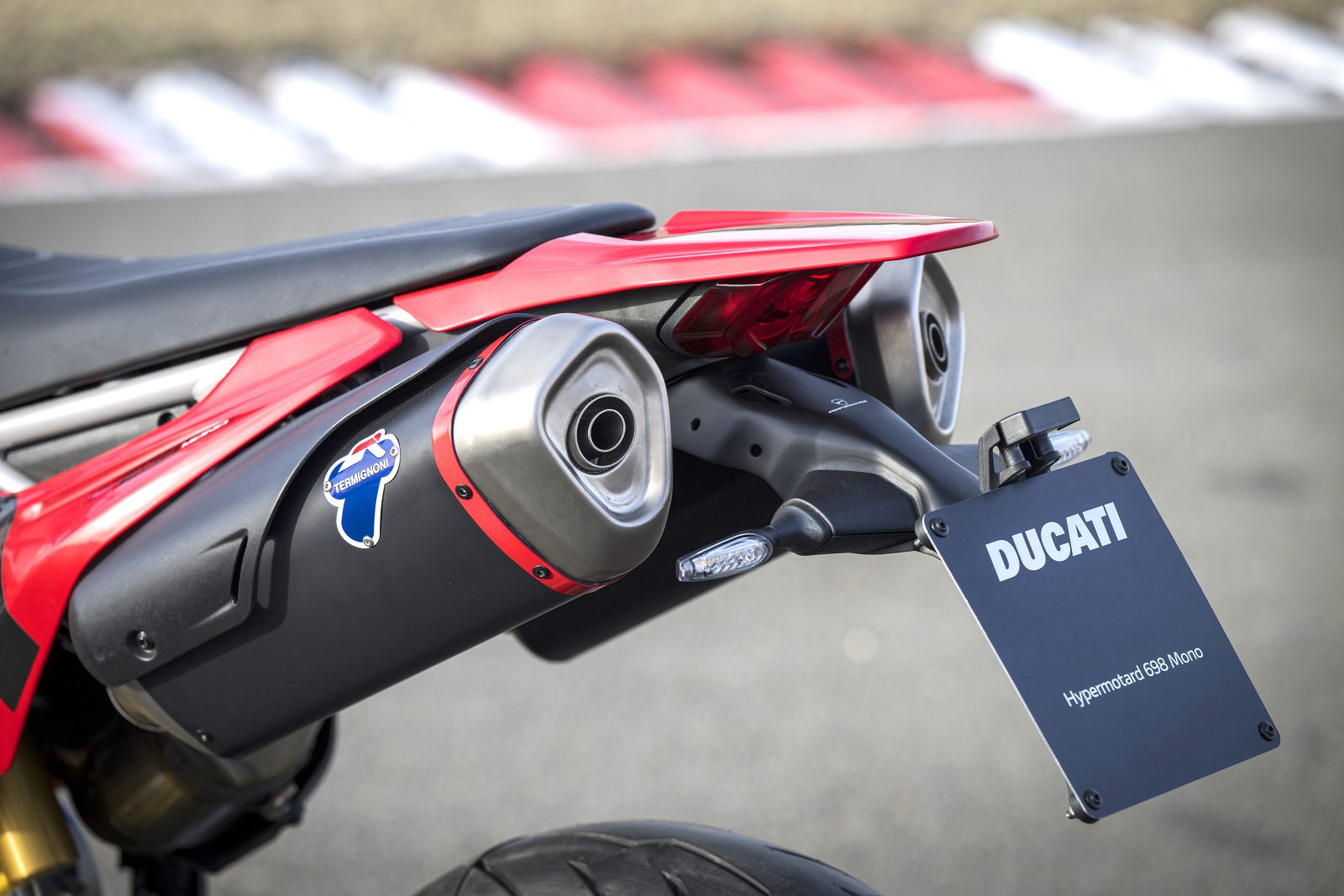
A word of warning, though. The 698’s extra-tall 904mm seat height isn’t going to suit everyone, although there is an optional lower perch that drops to 889mm. That said, I’m 170cm and I didn’t have too many problems with the Ducati on the standard seat, partly because the chassis and seat are so slim and because the bike only weighs 151kg wet (with no fuel). It’s not like a tall and bulky adventure bike that hits the scales at over 200kg. But the on-paper tall seat might worry a few potential buyers.
Being a track-focused supermoto means the 698 Mono also lacks a few niceties. A compact 3.8-inch LCD display is a little small compared to other models in Ducati’s range. I preferred to change the modes and the settings in the pits, stationary, not out on track, as they are not too clearly displayed, and you can’t fully turn off the rider aids on the move. But compared to the competition, it’s a big step forward.
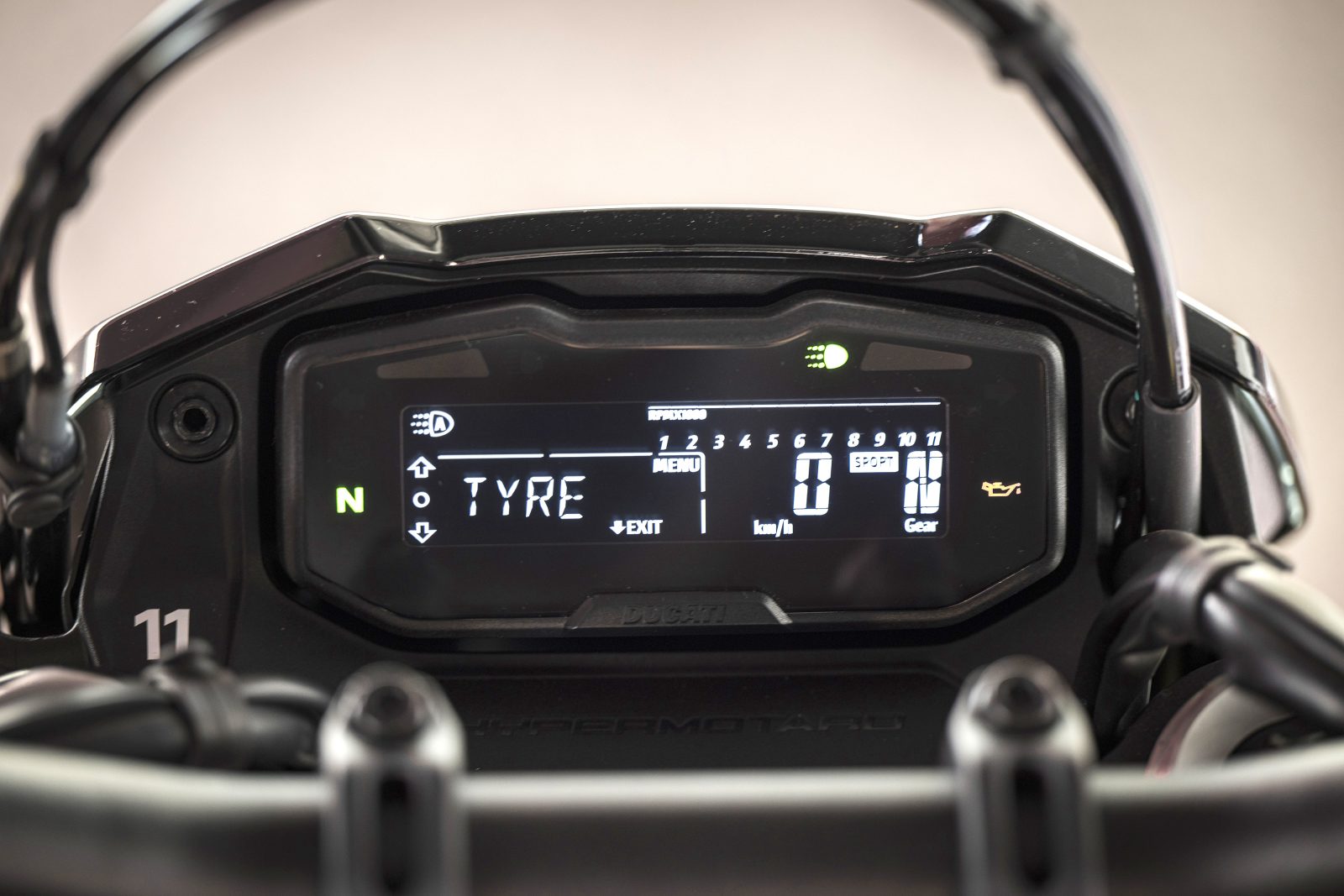
Of course, this was a track-only test and the Hypermotard 698 Mono will need to be ridden on Australian roads before we can form a conclusive opinion. But based on a day of lapping in its natural environment, it’s clear that Ducati has moved the supermoto needle and changed the way we should look at singles.
Its free-revving Superquadro Mono is the most powerful single-cylinder you can buy. It excels at both low and high speeds, thanks to a hunger for revs and excellent fueling, and even has 15,000km-wide oil change intervals.
The chassis is light and the steering is as sharp as a pin without being flighty.
Above all, the rider aids are out of this world and will help racers and weekend enthusiasts alike develop their skills in safety. Ducati has moved the Supermoto goalposts.
TEST: ADAM CHILD PHOTOGRAPHY: ALEX PHOTO
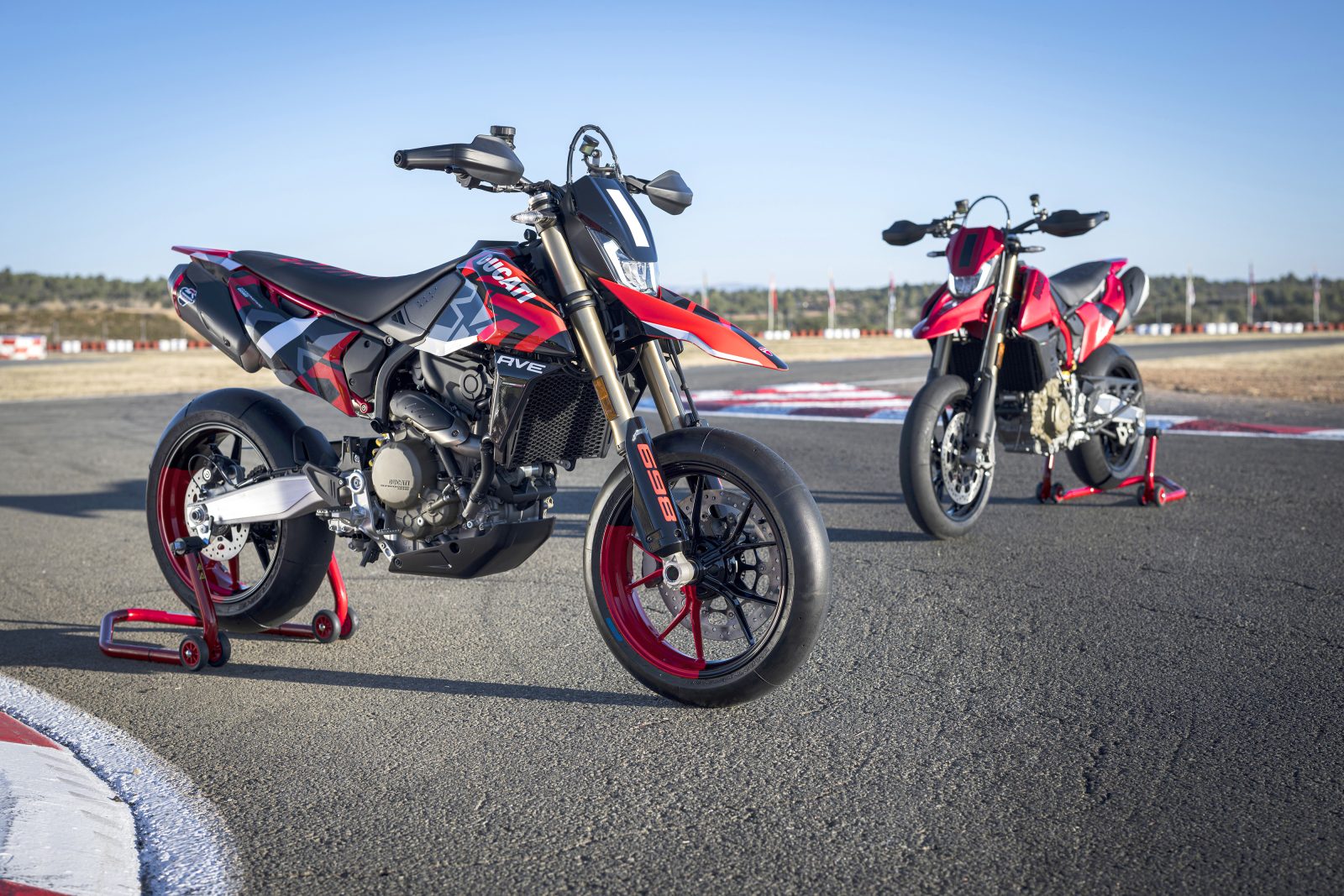
Loud mouth
The Termignoni exhaust fitted to our RVE model pushes power to 85hp and drops the weight by another 1.5kg. However, it is both loud and expensive.
Pricey pickings
Our test model was an RVE with extras from the catalogue; a race exhaust ($4304), race seat ($340), sump guard ($181) and race footpegs ($566).
Balance for dummies
The original Supermono racebike from the 1990s used a dummy conrod, but the new 659cc single from Ducati uses a pair of balance shafts.
Half a twin
Essentially chopping a 1299 Panigale in half produces a 659cc single cylinder engine that produces 57kW at 9750rpm and 63Nm of torque at 8000rpm.
Up the slide
The level of rider aids and technology sets a new benchmark for this class and the slide by brake Bosch cornering ABS is a game changer.
PROS: The engine has rev-happy power, there are excellent rider aids for all abilities. And a desirable, quality finish.
CONS: The 904mm seat height, the options list becomes expensive and a quickshifter isn’t standard on the base model.
SPECS
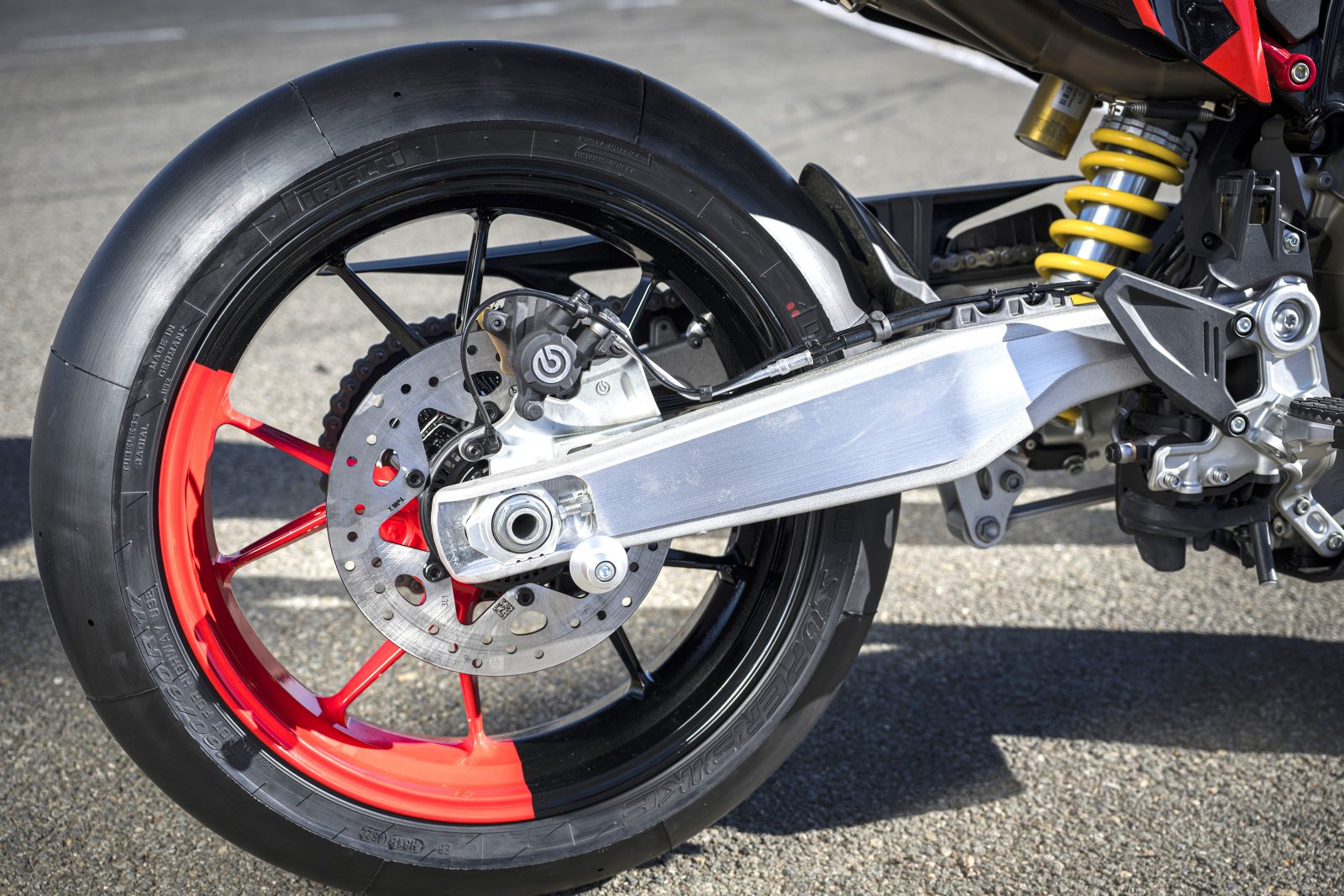
ENGINE
Capacity 659cc
Type Single-cylinder, desmodromic, four valves
Bore & stroke 116mm x 62.4mm
Compression ratio 13.1:1
Cooling Liquid
Fueling EFI, 62mm throttle body
Transmission Six-speed
Clutch Wet, multi-plate, slipper type
Final drive Chain
PERFORMANCE
Power 57kW (76hp) @ 9750rpm (claimed)
Torque 63Nm @ 8000rpm (claimed)
Top speed 200km/h (est)
Fuel consumption Not measured
ELECTRONICS
Type Not given
Rider aids Cornering ABS, traction control, wheelie control, engine brake control and launch control
Rider modes Sport, Road, Urban and Wet
CHASSIS
Frame material Tubular steel
Frame type Trellis
Rake 26.1°
Trail 108mm
Wheelbase 1443mm
SUSPENSION
Type Marzocchi/Sachs
Front: 45mm, fully adjustable fork, 215mm travel
Rear: Monoshock, fully adjustable, 250mm travel
WHEELS & BRAKES
Wheels Y-spoked alloy
Front: 17 x 3.5 Rear: 17 x 5.0
Tyres Pirelli Diablo Rosso IV
Front: 120/70-17
Rear: 160/60-17
Brakes Brembo
Front: Single 330mm disc, four-piston caliper
Rear: Single 245mm disc, single-piston caliper
DIMENSIONS
Weight 151kg (oil, no fuel, claimed)
Seat height 904mm
Width Not given
Height Not given
Length Not given
Ground clearance Not given
Fuel capacity 12L
SERVICING & WARRANTY
Servicing First: 1000km
Minor: 15,000km
Major: 30,000km
Warranty Two years, unlimited kilometres
BUSINESS END
Price From $22,800 (ride away)
Colour options Ducati red
Contact www.ducati.com/au/en

